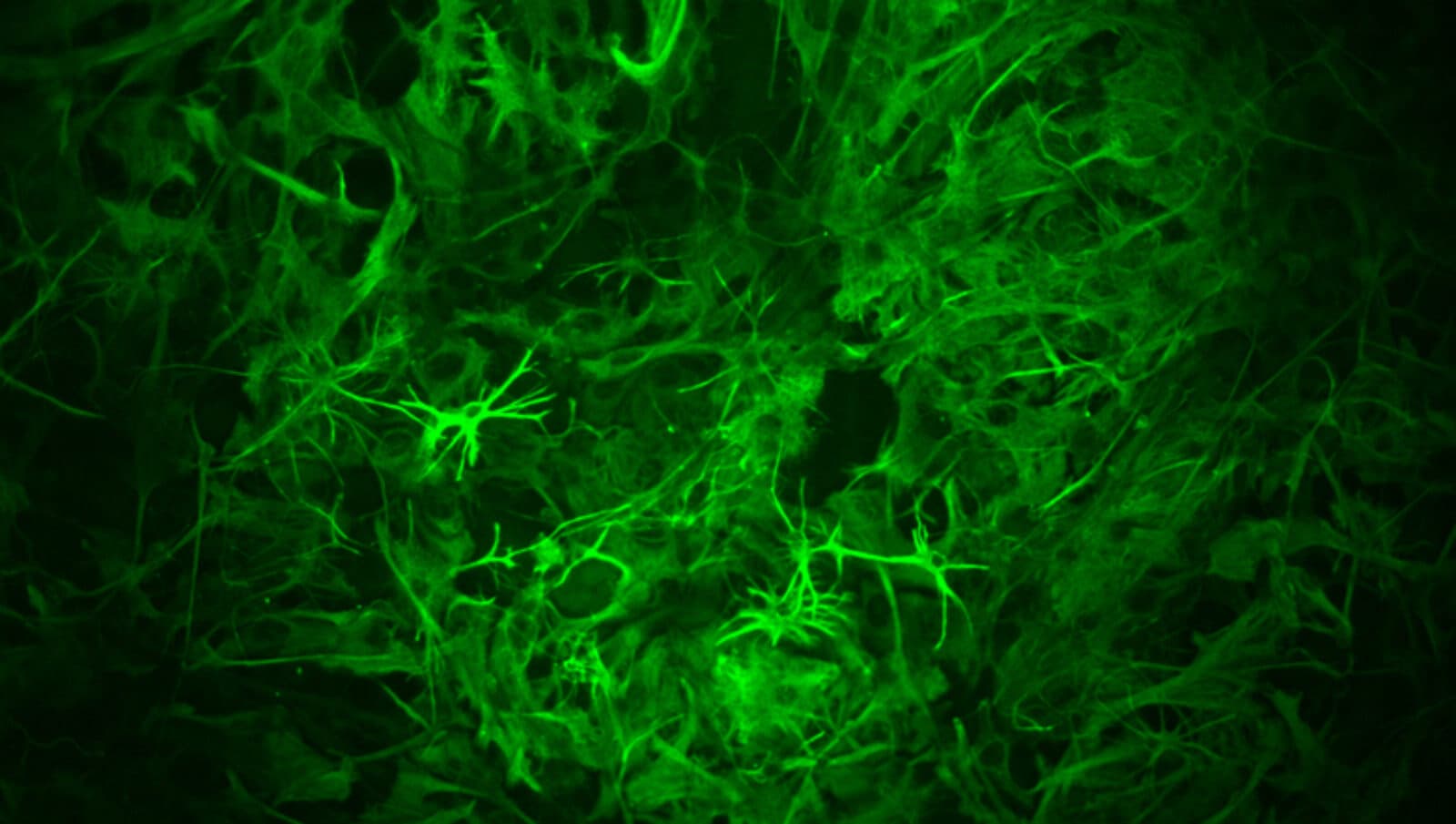Radical Brains Cells and Brain Tech
by Lindsay Borthwick
Research never rests

The Author
Research never seems to rest, even in the dog days of summer. In this roundup of research highlights from the Kavli Neuroscience Institutes, we learn about mounting evidence that non-neuronal cells called glia, long characterized as passive support cells for neurons, are critical to making long-term memories. That is just one of a spate of recent discoveries that glial cells, which are overwhelming common in the brain, are critical to its function, mediating the cross-talk between neurons that underlies every thought, feeling and action. We also learn about a remarkable new technology that translates brain signals into speech, as well as the neuroscience community’s efforts to think through the ethics of a new generation of brain technologies.
In 2013, when former U.S. President Barack Obama announced a grand challenge to develop and apply new brain research tools, or neurotechnologies, to “revolutionize our understanding of the human brain,” he put ethics front and center. Since then, the technological innovations arising from the BRAIN Initiative have mounted. One of them, reported this summer by Edward Chang, a neurosurgeon and research at the University of California, San Francisco, is a device capable of decoding speech directly from the human brain. It is part of Chang’s research program focused on helping people with paralysis communicate. “I have no interest in developing a technology to find out what people are thinking, even if it were possible. But if someone wants to communicate and can’t, I think we have a responsibility as scientists and clinicians to try to restore that most fundamental human ability,” Chang said in a UCSF news article. He is a member of the Kavli Institute for Fundamental Neuroscience at UCSF.
Alongside Chang’s research, he has been working with Winston Chiong, a neurologist and neuroethicist at UCSF, on a collaborative research project exploring the ethical issues that arise from new neurotechnologies. In an article published by UCSF, Chang discusses the goals of his research, the limits of current technologies to decode brain activity, and his neuroethics project with Chiong, which is funded by the BRAIN Initiative. “Right now it will be such a major achievement to enable someone without a voice to express themselves again that it’s hard to worry about more problematic potential future applications of these techniques. But… this is exactly the kind of question we should be thinking about now so that we can make informed choices about how this technology should be developed in the future,” Chiong said.
Most research on epileptic seizures has focused on the role of nerve cells, or neurons. Now, a new study suggests that the failure of glial cells, which make up the majority of brain cells and are known to modulate neural activity, may play a role in triggering seizures. The researchers tracked the function of glia before and during seizures and found they are very active just before a seizure starts. The underappreciated role of glia in seizures could help explain why some people don’t respond to anti-epileptic drugs, which are designed to target neurons, according to the researchers. The experiments were done in zebrafish, a small, transparent organisms in which researchers can observe the nervous system in action. Emre Yaksi, a professor at the Kavli Institute for Systems Neuroscience at the Norwegian Institute of Science and Technology, led the work.
Another new study, this time from neuroscientists at the Salk Institute for Biological Studies, showed that astrocytes, one type of glial cell in the brain, play a starring role in long-term memory. When the researchers disabled astrocytes in mice by blocking the release of calcium for communication, the rodents failed to make lasting memories. Making memories is a process and the change interfered with memory consolidation, when the connections between nerve cells are stabilized over time. “This is an indication that [astrocytes] are doing a lot more than just helping neurons maintain their activity. It suggests that they’re actually playing an important role in how information is transmitted and stored in the brain,” said senior author, Terrence Sejnowski, an advisory board member of the Kavli Institute for Brain and Mind, in a statement.
Neuroscientists around the world are experimenting with the larvae of tiny, semi-transparent fish—zebrafish—in order to study how brain circuits are structured and how they function. One of them is Ellen Hoffman, a member of the Kavli Institute for Neuroscience at Yale University, whose research focuses on neurodevelopmental disorders such as autism. A recent article in Yale Medicine magazine explains how a new and powerful microscope—the only one of its kind in New England—will help Hoffman “look into the fishes’ brains throughout development,” and collect live images as their brain cells talk to one another. Her goal is to understand the function of genes that increase the risk of autism by studying the brain changes that occur in genetically engineered zebrafish. Hoffman’s new microscope resides at Yale’s Neurotechnology Core, a design and fabrication facility for cutting-edge brain research tools that is partly funded by The Kavli Foundation.
